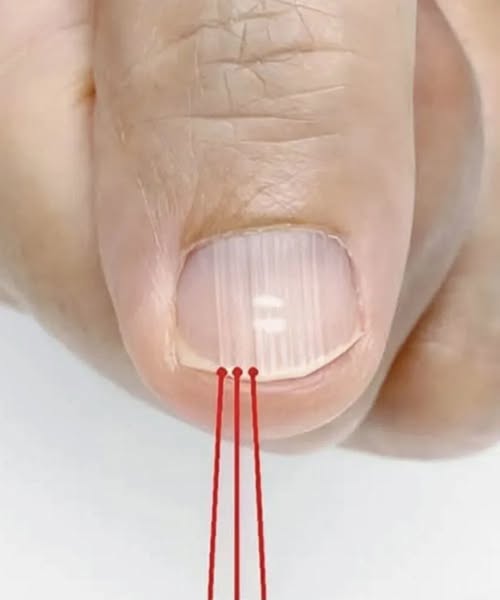If you have these lines on your nails after 40, it is a clear sign that..
Why You May Notice Vertical Ridges on Your Nails After 40 — And What They Mean
As we age, our bodies go through countless subtle changes—some more noticeable than others. One surprising area where these shifts show up is our fingernails. For many people, especially after the age of 40, vertical ridges—also called longitudinal striations—start to appear. These lines typically run from the cuticle to the tip of the nail and are a common feature of aging.
While they can be an aesthetic concern for some, the good news is that most vertical ridges are completely harmless. In fact, they’re considered a natural part of the aging process. But they can also offer insights into your overall health and nutrition, making them worth paying attention to.
Why Do Vertical Ridges Form?
The main culprit behind these changes is a natural slowdown in keratin production. Keratin is the key protein that gives structure to our nails (and hair), and as we age, our body becomes less efficient at producing it. As keratin production declines, the nail surface can become less smooth and more uneven, causing the familiar ridged appearance.
In addition, our skin and nails lose moisture with age. Dehydrated nails are more prone to brittleness, texture changes, and visible ridging. Daily wear and tear—such as frequent hand washing, exposure to soap, and use of cleaning products—can further dry out the nail bed, making ridges more pronounced over time.
Nutrient Deficiencies and Nail Health
Another reason these ridges become more noticeable with age is related to nutritional absorption. As we get older, the body may not absorb vitamins and minerals as effectively. This can lead to mild deficiencies in nutrients like:
-
Biotin (Vitamin B7): Helps strengthen keratin.
-
Iron: Essential for oxygenating cells, including those that form nail tissue.
-
Magnesium: Supports healthy cell function.
-
Zinc: Aids in tissue repair and growth.
If your diet lacks these nutrients—or if you have trouble absorbing them—your nails may become thinner, more brittle, and more prone to developing ridges or other surface changes.
When to Be Concerned
Although most vertical ridges are simply signs of aging, some nail changes may indicate underlying health conditions. If your nails also show signs such as:
-
Discoloration (yellow, brown, or blue tones)
-
Thickening or splitting
-
Pain, redness, or swelling around the nail
-
Rapid or sudden changes in nail texture
…it’s best to consult a doctor or dermatologist. In rare cases, vertical ridges and other nail irregularities can be linked to thyroid disorders, poor circulation, rheumatoid arthritis, or even systemic infections.
Caring for Aging Nails
The good news is that there are several simple steps you can take to keep your nails healthy and minimize the appearance of ridges:
-
Hydration is key – Drink plenty of water and moisturize your hands and nails daily with a nourishing hand cream or cuticle oil.
-
Eat a balanced diet – Focus on whole foods rich in protein, healthy fats, and essential vitamins and minerals.
-
Use gloves when cleaning – Limit exposure to harsh chemicals and water by wearing protective gloves when doing household chores.
-
Practice gentle nail care – Avoid aggressive filing or buffing, and use nail tools with care. Always trim nails straight across to prevent breakage.
-
Consider biotin supplements – If approved by your doctor, biotin supplementation may help strengthen nails over time.
-
Avoid harsh nail products – Limit the use of strong nail polish removers, especially those with acetone, which can strip moisture from the nails.
Final Thoughts
While vertical ridges on your fingernails may catch your eye as a new sign of aging, in most cases, they’re nothing to worry about. They reflect the body’s natural changes and often respond well to proper care and nutrition. That said, your nails can sometimes offer clues about your overall well-being—so paying attention to sudden changes is wise.
Aging doesn’t have to mean giving up on healthy, strong nails. With a little awareness and some gentle care, you can keep your hands looking and feeling their best—no matter your age.






